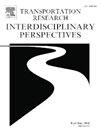多式联运路线选择:综合模糊等级风险评估和多标准决策方法
IF 3.9
Q2 TRANSPORTATION
Transportation Research Interdisciplinary Perspectives
Pub Date : 2024-10-22
DOI:10.1016/j.trip.2024.101252
引用次数: 0
摘要
选择多式联运路线是一个复杂的问题,因为存在各种往往相互冲突的决策属性,如运输成本和时间、组内和组间具有等级关系的各种风险、决策者的偏好以及众多可能的选项。为解决这一问题,我们提出了一种新颖的决策方法,将最优-最差法 (BWM)、模糊层次风险评估 (FHRA) 和加法比率评估 (ARAS) 整合在一起。该方法将路线决策问题分解为一个层次结构,并通过三个不同的阶段确定最佳解决方案。在第一阶段,BWM 为层次结构中的各种标准分配相对权重,确保准确反映决策者的偏好。在第二阶段,FHRA 评估从最低到最高层次结构的定性风险。这一过程包括计算最低层次结构的风险大小,并在上升到最高层次结构时逐步重新计算。多式联运成本模型提供运输成本和时间。在最后阶段,ARAS 综合所有决策数据,根据效用分数对所有可能的多式联运替代路线进行排序。现实案例研究验证了所提方法的实际适用性和有效性。研究结果表明,所提出的方法能有效识别出最合适的多式联运路线,作为最佳折中选择。这项研究为新的混合决策框架提供了新的知识,该框架将多标准决策方法与模糊层次风险分析相结合,从而加强了运输计划的设计,使其符合组织目标和客户要求。本文章由计算机程序翻译,如有差异,请以英文原文为准。
Multimodal transport route selection: An integrated fuzzy hierarchy risk assessment and multiple criteria decision-making approach
Selecting multimodal transport routes is a complex problem due to the presence of various, often conflicting decision-making attributes, such as transportation cost and time, diverse risks with hierarchical relationships both within and across groups, decision-makers’ preferences, and numerous possible options. To address this problem, a novel decision-making approach is proposed, integrating the best-worst method (BWM), fuzzy hierarchy risk assessment (FHRA), and additive ratio assessment (ARAS). This approach decomposes the route decision-making problem into a hierarchy structure and determines the optimal solution through three distinct phases. In the first phase, BWM assigns relative weights to various criteria within the hierarchical structure, ensuring that the decision-makers’ preferences are accurately reflected. In the second phase, FHRA evaluates qualitative risks from the lowest to the highest hierarchy levels. This process involves calculating risk magnitudes at the lowest hierarchy level and progressively recalculating them as they ascend to the highest level of the hierarchy. The multimodal transport cost-model provides transportation cost and time. In the final phase, ARAS synthesizes all the decision-making data to rank all possible multimodal alternative routes based on utility scores. The realistic case study validates the practical applicability and effectiveness of the proposed approach. The findings indicated that the proposed methodology effectively identify the most appropriate multimodal transport route as the best compromise choice. This study contributes new knowledge regarding a new hybrid decision-making framework that combines multiple criteria decision-making methods with fuzzy hierarchy risk analysis, thereby enhancing the design of transportation plans to align with organizational goals and customer requirements.
求助全文
通过发布文献求助,成功后即可免费获取论文全文。
去求助
来源期刊

Transportation Research Interdisciplinary Perspectives
Engineering-Automotive Engineering
CiteScore
12.90
自引率
0.00%
发文量
185
审稿时长
22 weeks
 求助内容:
求助内容: 应助结果提醒方式:
应助结果提醒方式:


